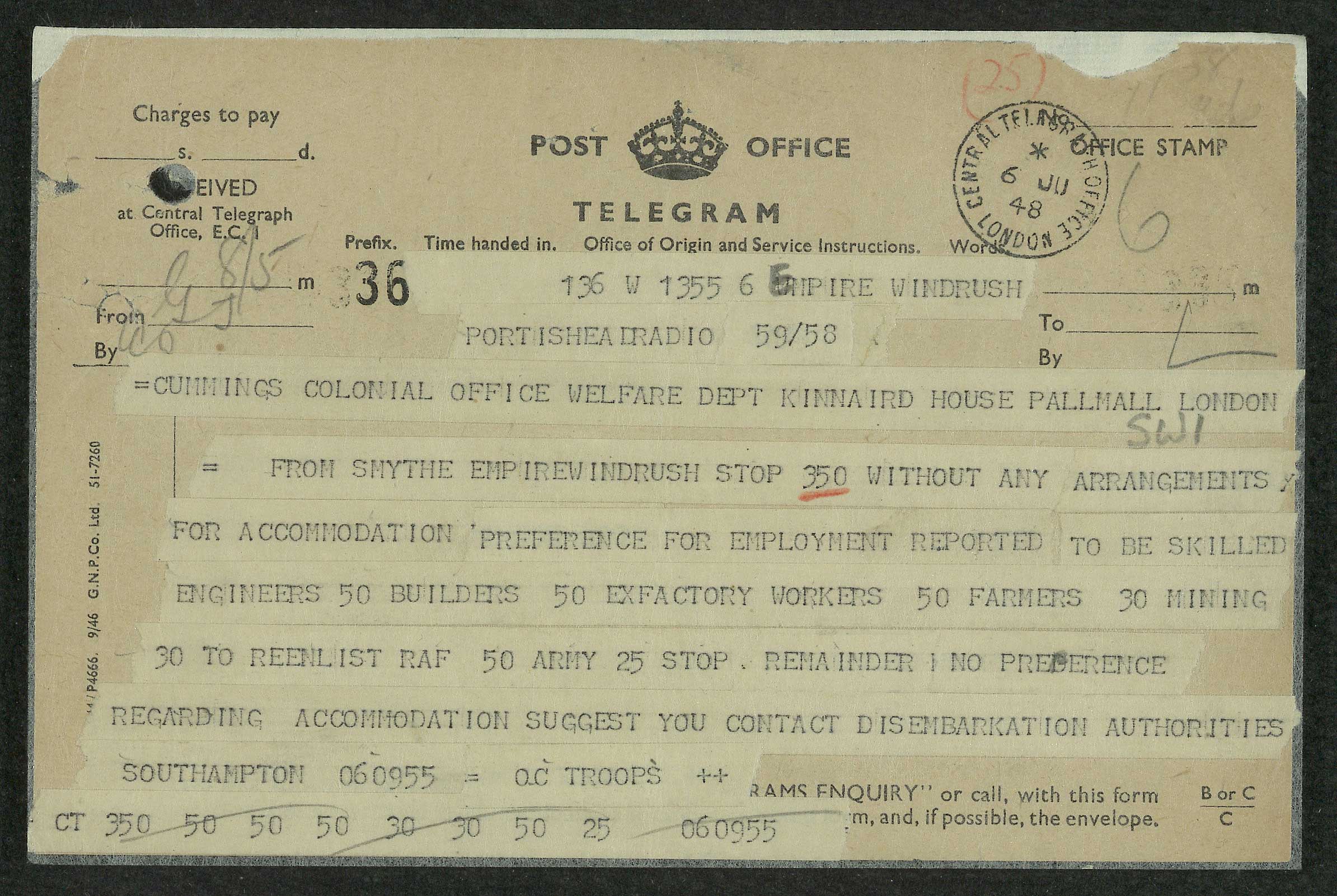
A telegram to Mr Cummings, Colonial Office in London, from Mr Smythe about passengers on the Windrush, 6 June 1948, Catalogue ref: CO 876/88
This telegram was sent on 6th June before the arrival of the Empire Windrush to share information about the passengers. Explain that a telegram is a message that is sent by electricity or radio and then printed and delivered to someone’s home or office. ‘STOP’ was used in the telegram to mean ‘full stop’ as the telegram lacked punctuation marks.
Transcript
[Stamp: Central Telegraph Office London Office London 6 July 1948]
POST OFFICE TELEGRAM
136 W 1355 6 EMPIRE WINDRUSH
PORTISHEAD RADIO 59/58
= CUMMINGS COLONIAL OFFICE WELFARE DEPARTMENT KINNAIRD HOUSE PALLMALL LONDON, S.W.
= From Smythe Empire Windrush STOP 350 without any arrangements for accommodation. Preference for employment reported to be skilled engineers, 50 Builders 50 Ex-factory workers, 50 Farmers, 30 Mining, 30 to re-enlist RAF [Royal Air Force] 50 Army STOP. Remainder no preference regarding accommodation suggest you contact disembarkation authorities [those look after the passengers when they leave the ship] Southampton 060955 + O.C. Troops ++
CT 350 50 50 50 30 30 50 25 060955
- Why do you think this telegram was sent?
- How many passengers needed somewhere to stay on arrival?
- What job skills do the passengers have?
- How many were going to join the Royal Air Force (RAF) and the army?
- What information is not given about the passengers in the telegram?
- How can telegrams be helpful to historians to find out about the past?
- Do we use telegrams today? How else do we send short messages?
